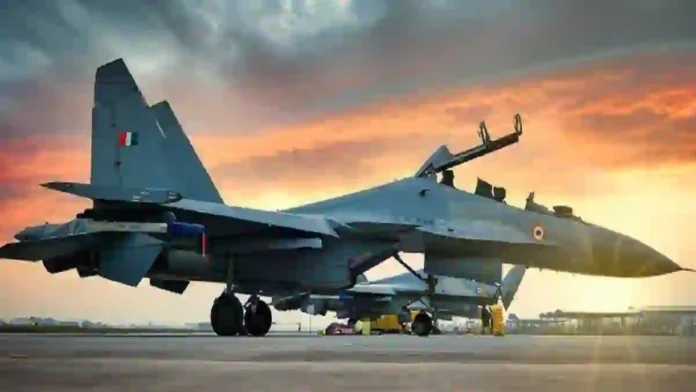India’s decision to modernize its Su-30MKI fighter jet fleet marks a bold and pragmatic step in its ongoing quest for air superiority amid intensifying regional threats from China and Pakistan. Announced on June 27, 2025, the ambitious “Super-30” program aims to transform the backbone of the Indian Air Force (IAF) into a 4.5+ generation platform, integrating advanced indigenous technologies while reinforcing the country’s strategic partnership with Russia.
The Su-30MKI, a product of Indo-Russian collaboration, has long been India’s most numerous and versatile combat aircraft. Its unique hybrid architecture—combining Russian airframes and engines with Israeli, French, and Indian subsystems—was tailored to India’s operational needs, including high-altitude missions and long-range strike capability.
Read- India looking at option of buying more S-400 air defence systems from Russia
However, limited technology transfer and reliance on Russian-supplied spares have historically constrained India’s ability to independently upgrade or maintain the fleet, fuelling a renewed push for self-reliance.
At the heart of the Super-30 upgrade is the integration of the Virupaksha Gallium Nitride (GaN)-based Active Electronically Scanned Array (AESA) radar, developed by India’s DRDO. This state-of-the-art radar, featuring around 2,600 transmit/receive modules, offers substantial improvements over the legacy N011M Bars radar: it can detect fighter-sized targets at 300–400 km, is significantly lighter, consumes less power, and boasts advanced thermal management for reliability in combat.
The radar’s high resolution and multi-target tracking capabilities are designed to counter stealthy adversaries such as China’s J-20 and Pakistan’s JF-17 Block 3.
The upgrade package also includes advanced electronic warfare suites, a fully digital cockpit, and integration of next-generation indigenous air-to-air missiles like the Astra MK-2 and Astra MK-3 ‘Gandiva’, which promise engagement ranges up to 300 km.
Read- TEJAS MK-1A Is Slowly Evolving Into A Regional Game Changer
Raed- DAC Meet: New Minesweepers, QRSAM Systems On DAC Meet Agenda
These enhancements are expected to dramatically improve situational awareness, survivability, and lethality, addressing operational gaps exposed during past confrontations—such as the 2019 Balakot airstrike, where Su-30MKI pilots struggled with radar limitations and electronic countermeasures from adversary F-16s.
India’s emphasis on indigenisation is a defining feature of this modernization. By incorporating homegrown systems like the Uttam and Virupaksha radars and Astra missiles, India seeks to reduce dependence on foreign suppliers and strengthen its domestic defence industry, in line with the “Make in India” initiative.
However, integrating these advanced Indian technologies into a Russian-designed airframe presents technical challenges, particularly in software compatibility and flight certification, which could extend the program’s timeline to 3–4 years for the initial batch of 84 aircraft.
Economically, the Super-30 program is estimated at $2.4–7.8 billion, a fraction of the cost of acquiring new Western fighters like the Rafale, and is expected to extend the Su-30MKI’s service life to 2055. This cost-effectiveness is vital as India balances immediate operational needs with long-term investments in fifth-generation platforms such as the Advanced Medium Combat Aircraft (AMCA).
Geopolitically, the upgrade underscores India’s enduring, yet evolving, defence partnership with Russia. While Russia has reaffirmed its commitment to deliver the final S-400 air defence squadrons by 2027 despite supply chain disruptions from the Ukraine conflict, India is hedging its bets by accelerating domestic innovation and diversifying its procurement sources. This multi-alignment strategy is crucial as India navigates U.S. sanctions risks and seeks advanced technology transfers from Western partners.
The Su-30MKI modernisation signals India’s determination to maintain a credible deterrent against regional adversaries while advancing towards defence self-sufficiency. The Super-30 program is not merely an upgrade—it is a strategic bridge, buying time for India’s next-generation fighters to mature and ensuring the IAF remains a formidable force in an increasingly contested airspace.
Yet, as stealth and sixth-generation technologies proliferate, India’s air power calculus will inevitably shift, forcing a future reckoning between upgrading legacy platforms and embracing new-generation solutions.
IDN (With Agency Inputs)
Agencies




